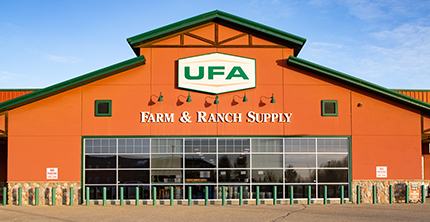April 2021 | vol. iv, #4
_________________________________________________________________
_________________________________________________________________

DEALERS CONFRONT SOARING LUMBER PRICES AND TIGHT SUPPLY
Lumber is a staple item for most backyard projects. The pandemic has halted any type of travel, which has left many to transform their homes into their own piece of paradise. This high demand has caused a shortage of lumber, which has led to record-breaking prices.
The price of lumber has almost tripled over the last year, which has broken every record. According to the Ministry of Forests, Lands, Natural Resource Operations and Rural Development in British Columbia, an SPF (spruce, pine, fir) two-by-four is $1,040 per thousand board feet as of April 12. The average for April in 2020 was $445 per thousand board feet. For the same month in 2019, the average was $358.
“I've been in the business 32 years and I've never seen anything like this,” said Steve Foran, store manager of Chester Building Supplies in Chester, N.S. “Everybody I speak to is the same. No one's ever seen a situation like this. There's such high demand and low supply. It’s been extremely volatile.”
Consumers now have extra cash in hand due to a decrease in travelling, commuting, or recreation. People are fixing up their homes they have spent so much time in.
Increased home sales have also led to an increased demand for lumber and building supplies, explained Foran.
“The United States has strong sales every time you sell a house; usually they renovate. That’s a key indicator—for us to look at our industry is home sales.”
Items like white wood are at an all-time high, but the pandemic has affected items like engineered products, resin, and adhesives. Finding and sourcing new products has also been a challenge for dealers.
“If you didn't buy from a vendor last year, you can't buy anything from them. They're not looking for any new business because they're just trying to keep the dealers that they supply in business,” said Foran.
Demand for home improvement materials has caused the industry to flourish during a time of need. Foran said he is lucky to be in an industry that is doing so well during a time when some are struggling.
“We're very, very lucky to be in the industry.”
_________________________________________________________________
_________________________________________________________________ 
UFA FINDS GROWTH IN RURAL WESTERN MARKETS, ONLINE AND IN STORE
As a co-operative retailer, UFA is one of the significant hardlines players in the West. With the surge in growth in the farm and ranch sector, the business has been solid.
Glenn Bingley is vice president, agribusiness and supply chain at UFA. The agribusiness division has 34 retail farm and ranch supply stores, which sell a large variety of agricultural-related products to agriculture—farms and ranches—and acreage customers. Developing an integrated online strategy for its bricks-and-mortar stores has been an important part of the company’s development during the past year. Bingley says e-commerce has become a big driver for the company.
“We went live with buy-online-pickup-instore at all our stores last year,” he says.
On the procurement side, UFA is refining its assortments. “We’ve added more products related to livestock health and feed. For example, we’re proud to have introduced Prostock, UFA’s brand of minerals, forage seed, and milk replacers,” Bingley notes. Another growth segment has been lawn and garden and outdoor living.
“At UFA, we look to our members and customers to guide our decision-making and it’s reflected in the products we carry and the services we offer. It’s one of the special things that make a co-operative different from any other business.”
_________________________________________________________________
_________________________________________________________________

SUPPLY CHAIN CHALLENGES PUT PRESSURE ON DEALERS
The pandemic has taught dealers and distributors some valuable lessons about their supply chains.
Since last summer, web orders and delivery patterns have settled back to normal levels as shopping restrictions eased. But the pandemic exposed weak links in the supply chain that, for some products, remains fragile.
“There was no contingency for this kind of thing,” Curt Crego, operations manager for the 60-location Windsor Plywood, says of the pandemic, during which his company experienced shortages across a range of products.
“Allocation has been replaced by managed supply,” says Dave McNeil, VP and national accounts manager for Taiga Building Products. He singles out the “unbelievable” demand for treated lumber as one example of hard-to-get products. Other dealers pointed to paint, moulding, and hardware.
“No one had extra inventory,” says Brad Swanson, who owns a Home Hardware Building Centre in Kitchener, Ont.
To accommodate the rising demand for products in general, other home improvement retailers expanded their delivery capacities and stock on hand. But product shortages and delivery delays are not expected to ease anytime soon.
________________________________________________________________
_________________________________________________________________
Video Content Provided by Trusted
Hardlines Media Partners



|